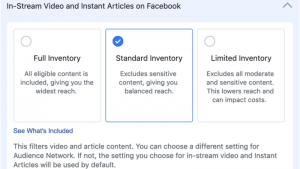Earlier this month, Google AdWords officially launched Flexible Conversion Counting, a new type of conversion that allows advertisers to track the types of conversions that are most valuable to their business.
This change changed how conversions appeared in our AdWords interface – “Conversions (1-per-click)” changed to “Converted Clicks” and Conversions (many-per-click) changed to “Conversions”. For many PPC professionals, we just made a mental note, updated some reporting templates or our data warehouse and moved on.
For other advertisers, this update opened up the door to consider, or reconsider, which conversion types best suit their business. With that in mind, we wanted to give a refresher on what types of conversions you should be tracking and why, while also reviewing some of the new conversion types available in AdWords.
Below, we’ve broken out conversion types into three areas – Hard Conversions, Estimated Conversions and Percent-of Conversions.
Hard Conversion Types
These are your hard numbers, the bottom-line numbers, and likely what you’ve already been reporting on, assuming all of your conversion tracking is set up accurately.
Converted Clicks
This is how many clicks resulted in one or more conversion actions. The actual number of conversions will be counted separately in the “Conversions” column. The number of converted clicks can help you approximate how many unique customers you’re acquiring.
For example, a customer clicks on your ad and makes two purchases. You’ll see only one converted click in this column, but you’ll see two conversions in the “Conversions” column. Converted Clicks are helpful for tracking leads, when more than one action (i.e., two sign-ups) from the same customer does not provide any additional value to your business.
Conversions
This column reports total conversions, across all the conversion actions you’re tracking. However, this conversion type also takes into consideration how you’ve chosen to count your conversions (unique or all), which affects the number shown in this column.
In the AdWords interface you will see the following example: You track two conversion actions: leads and sales. You decide to count “Unique” leads and “All” sales. When one ad click turns into two leads and two sales, it’s counted as three conversions: one for the unique lead, and two for the sales.
As the example shows, this is a solid conversion type to track when you have a mixed model of success and are tracking multiple actions.
Phone Call Conversions
If you’ve set up call extensions, your Phone Call Conversions column will represent the number of phone calls that were longer than the call duration specified for that call extension. Keep in mind that in order for Google to track Call Extensions, you must use a Google Call Forwarding Number.
Estimated Conversion Types
These are fairly new conversion types provided by Google and based on estimated data. There is no additional conversion tracking needed on your end to view these conversion types, as they rely on Google’s sophisticated tracking to provide you with more information about how your customers behave.
Estimated Cross-Device Conversions
Estimated Cross-Device Conversions take place when a customer clicks on an ad on one device, then converts on a different device or browser. Using this conversion type, you can see how your ads impact conversions that happen across multiple devices and browsers.
Cross-Device Conversions will be included in your Estimated Total Conversions, outlined below.
You don’t need to be serving ads on multiple devices for this column to populate – it’s based on how the user completes the conversion.
his conversion type is most helpful when trying to understand how your customers behave and how to reach them. For example, it may enlighten you so much that you start serving ads on mobile.
Estimated Total Conversions
This is Google’s best estimate of the total number of conversions that AdWords drives all together. This metric will include Estimated Cross-Device Conversions, Conversions (previously many-per-click) and Phone Call Conversions. According to Google, you can use this column to understand your return on investment and make better decisions about your bids and budgets.
Percent-Of Conversion Types
“Percent-of Conversions” in an entirely made up name. However, I’ve named the conversion types below “Percent-of Conversions” because when optimizing and adjusting bids, many PPC professionals take a percent of these conversions into consideration. While many advertisers won’t fully rely on these metrics, many will understand their value and use a percent of them to dictate their actions.
Click-Assisted Conversions
Appearing only for search campaigns, Click-Assisted Conversions is the total number of conversions for which a particular keyword contributed one or more assist clicks. Assist clicks can be defined as the total number of clicks a keyword received prior to a conversion, excluding the last click.
Basically, this keyword “assisted” with the conversion, but was not the last click a user made prior to the conversion.
Typically, advertisers take into consideration 50 to 80 percent of their Click-Assisted Conversion metrics to optimize and adjust bids and budgets. This reason being that if your data is relying on last-click activity, the conversion has likely been recorded by another channel – direct load, SEO, etc.
However, it can be said that the click on your PPC ad “helped” the user convert – gave them a boost if you will. Therefore, in order to keep all other channels running smoothly, I like to keep mind how my keywords may have “assisted” with conversions on other channels.
Impression-Assisted Conversions
The Impression-Assisted Conversions column shows the total number of conversions for which a particular keyword triggered assist impressions prior to the last click. This is the same idea as Click-Assisted Conversions and is only shown for Search campaigns, with the difference being that it relies on assist impressions rather than assist clicks.
For this conversion-type, advertisers usually take a much smaller portion into consideration when optimizing and adjusting bids and budgets – typically 10 to 20 percent. Click-Assisted and Impression-Assisted conversions help advertisers better understand the conversion funnel that leads a user to take a given action.
View-Through Conversions
Appearing only for the Display Network, View-Through Conversions happen when a customer views your image or rich media ad before converting, but never actually clicks on the ad. If these customers later convert, this metric counts their conversions as “View-Through Conversions.” This conversion type automatically excludes conversions from people who’ve also clicked your Search ads.
Since a user never actually clicks on the ad, it is likely that the View-Through Conversion is being counted elsewhere in your data (SEO, direct load, etc.), just like with your Assisted metrics. Because of this, we don’t take View-Through Conversions into account 100 percent, but rather use a percent of them to help with optimization efforts. Typically, advertisers will take into account anywhere from 10 to 50 percent of View-Through Conversions when optimizing, but won’t showcase the numbers as hard conversions.
Summary
Choosing the right conversion type for your business can seem overwhelming at first. Hopefully reading through this article has helped you further understand the types that are available, and how they are used by advertisers today.
In most cases, the road to success starts by simply defining what success looks like – and with Google now offering conversion types for nearly every business model, it’s becoming easier for businesses to see the bigger picture and attain their goals that much faster.
If you need more information on conversion types or tracking, please visit the AdWords Help website or comment below.
![]() Meet Your Favorite Search Engine Watch Contributors
Meet Your Favorite Search Engine Watch Contributors
Many of SEW’s leading expert contributors will be at ClickZ Live, the new online and digital marketing event kicking off in New York (March 31-April 3). Hear from the likes of: Thom Craver, Josh Braaten, Lisa Barone, Simon Heseltine, Josh McCoy, Lisa Raehsler, Greg Jarboe, Dan Cristo, John Gagnon, Eric Enge and more!
(596)





